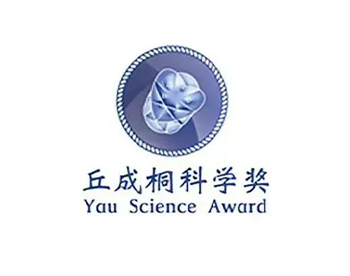2026 ISEF Registration Full Guide: How to Conquer the “Ivy-League STEM Ticket” with a 12% Acceptance Rate
As the 2025-2026 season for the Regeneron International Science & Engineering Fair (ISEF) global qualifying competitions gets underway, high-school students in China aiming for Ivy League schools and top 20 universities have a crucial opportunity. This prestigious competition is not just a showcase of research ability, but a key that opens doors to world-class institutions. Recent data show that among students at one agency alone participating in ISEF-related research projects, the Ivy League acceptance rate reached 12 %, and the Top 20 university acceptance rate 45 % — evidencing ISEF’s heavy weight in the U.S. college admissions process.
Understanding ISEF: Why It’s Considered the “Research Passport” for Top Universities
As the largest and highest-level global science competition for high-schoolers, ISEF is organized by the Society for Science and sponsored by Regeneron Pharmaceuticals. It covers students in grades 9–12 and spans core fields in natural sciences, engineering technologies, and selected social sciences. For Ivy League admissions officers, participating in ISEF is not simply a “bonus” — it’s a direct measure of a student’s research potential.
With over 75 years of development, ISEF has a mature global selection system. China is divided into eight regional zones; each region uses affiliated competitions to select top entrants who advance to the global finals. In 2025, the global finals drew more than 1,800 students from over 80 countries. Many of their research outcomes have secured patents or institutional funding, translating lab discoveries into real-world applications.
2025-2026 Season Key Information: Timeline & Policy Updates
Nationwide Registration Timeline Summary
The new season’s preliminary competitions adopt a “zone launch, staggered registration” model. In the Sichuan region for example, registration opens September–November 2025, submission deadline is January 2026, with review and oral presentation in mid–late January (public viewing on January 18). Other regions have not yet published exact timelines, but by reference to the 2025 season, most affiliated competitions’ registration will end by March 2026. We recommend students closely monitor their region’s official notices.
Three Major Rule Changes to Watch
- Reduced quotas for international / expatriate schools: The Sichuan region has cut each international/expatriate school’s recommendation slots from 5 to 3, increasing internal competition. Moreover, internal selection generally occurs by April-May before summer, which means preparation must start at least six months in advance.
- Tighter cross-region participation restrictions: Students holding overseas status but studying at regular domestic schools can no longer register via expatriate-school channels; they must participate through their local region’s open selection competitions.
- Stronger pre-registration review process: All projects must complete SRC (Scientific Review Committee) and IRB (Institutional Review Board) approval before starting experiments. Projects involving human subjects or vertebrate animals must submit additional compliance documentation; projects without prior approval will be disqualified from registration.
Additionally, overseas regions such as Canada have adjusted rules: for example, Canada Wide Science Fair (CWSF) no longer uses open qualifying rounds but selects from silver-award (or higher) projects, then further reviews to determine 8–10 entries advancing to ISEF — raising the bar for Chinese international students.
Subjects & Judging: What the 2025 Awards Tell Us
22 Subject Categories, with New TECA Track Standing Out
ISEF expanded from 21 to 22 subject categories in the 2024 season; the newly added TECA (Technology Enhances the Arts) track became a popular choice in 2025. The full list includes:
Animal Sciences; Behavioral & Social Sciences; Biochemistry; Biomedical & Health Sciences; Biomedical Engineering; Cellular & Molecular Biology; Chemistry; Computational Biology & Bioinformatics; Earth & Environmental Sciences; Embedded Systems; Energy: Chemical; Energy: Physical; Engineering: Mechanical; Environmental Engineering; Materials Science; Mathematics; Microbiology; Physics & Astronomy; Plant Sciences; Robotics & Intelligent Machines; Systems Software; Translational Medicine; TECA.
From 2025 first-place winners’ data, interdisciplinary projects were significantly more represented. For example, one team combined Embedded Systems with Environmental Science to create a smart water-quality monitoring device; another used the TECA track to digitally reconstruct heritage art preservation. Both received high praise from judges.
Deep Dive into Judging Criteria: 35 Points for the Presentation
ISEF applies differentiated criteria for science vs engineering projects, but core aspects revolve around five key dimensions, total 100 points. Presentation (35 points) becomes the make-or-break factor.
For science projects:
- Execution (data collection, analysis, interpretation): 20 points — demands systematic data, repeatability, correct math/statistics.
- Creativity: 20 points — looks at whether the project offers novel insight or opens new possibility.
For engineering projects:
- Execution (construction & testing): focuses on prototype completeness and multi-condition testing, reflecting engineering skill.
The presentation dimension is split into Poster (10 points) and Interview (25 points). The poster must be logically clear with well-labelled visuals; the interview evaluates the student’s grasp of foundational science, independence in the project, understanding of limitations, and future research plans. In 2025, judges stressed that in team projects, every member must demonstrate substantive contribution and deep understanding — otherwise they face immediate deduction. The new “Life Sciences Innovation Award” introduced in 2025 further emphasises real-world application and social value.
Award-Winning Case Studies: What Kind of Projects Top Universities Prefer
Engineering: Turning Waste into Resource
One 2025 engineering first-place project exemplified academic excellence: a student developed an intelligent plastic recycling system combining embedded systems and mechanical engineering. The system converted discarded beverage bottles and 3D-printing waste into high-quality 3D-printing filament, reducing production cost by 40% compared to traditional methods and attracting patent interest and enterprise adoption. What made it stand out:
- Clear real-world environmental problem;
- Feasible technical solution with multi-round testing;
- Commercialisation potential, moving beyond “pure theory”.
Judges highlighted its full logic chain: “problem identification → engineering development → application implementation” — exactly what engineering tracks value.
Interdisciplinary: AI + Healthcare Innovation
Another first-place project merged computational biology, artificial intelligence and biomedicine: a voice-based screening system for depression using a smartphone recording. It achieved 92% accuracy, balanced privacy protection and cost-effectiveness, ideal for schools/communities, and secured funding from the National Institutes of Health (NIH). In 2025, 42% of ISEF first-place projects used AI algorithms — these projects tend to gain high marks in “Creativity” and “Social Value”. This case shows that interdisciplinary work isn’t simply piling on fields, but finding a meaningful intersection (AI solving healthcare access inequity) — that is what sets it apart.
Registration & Preparation Guide: From Materials to Time-Planning
12 Essential Materials for Registration
According to the 2025 season rules, the following must all be prepared in advance: research proposal, risk assessment form, mentor confirmation letter, SRC/IRB approval proof; if the project involves special domains, additional documentation is required: e.g., human-subject informed-consent form, vertebrate-animal ethics approval form.
Note: the 2025-2026 season introduces a new “finalist survey” requirement — all students advancing to the global finals must complete this survey to complete registration. Also, project display must include both a physical poster and virtual booth; the physical poster dimensions are 48"×48" (folded to 12"), centre panel 24", title panel 9"×35". Standard display boards are available for purchase via the ISEF store.
Participation Pathways for Different Student Identities
ISEF participation pathways are rigid about region and student status — students of different backgrounds must follow distinct routes:
- Domestic regular-school students: must enter via a regional affiliated competition (e.g., local science fair in Sichuan, Shanghai Youth Innovation competition etc.). In Shanghai region, it’s recommended to gain experience through district level before trying the city level.
- Expatriate-school students in China: must go through school internal selection to obtain recommendation; note that the Sichuan region has cut to 3 slots per school and internal selection is now by April-May, so preparation should start early.
- Students studying at U.S. high schools: some schools restrict to 10 projects, or allocate by student ratio; many require prior involvement in school research clubs or elective courses as pre-condition.
- Students with overseas identity but studying in domestic ordinary schools: cannot use the expatriate-school channel; must compete via their region’s open selection.
18-Month Preparation Timeline (Applicable for 2025-2026 Season)
Since ISEF’s project cycle is long and multi-phased, proper planning is essential. Based on 2025 season experience, the suggested timeline is:
- March–April 2025: Choose research direction, complete literature review; focus on frontier areas like AI + X, environmental tech, biomedical research.
- May–August 2025: Submit SRC/IRB approvals, launch experiment design and data collection; complete core research during summer.
- September–November 2025: Draft research report, prepare registration materials, complete regional registration and submission.
- December 2025–January 2026: Polish poster and interview content, perform mock Q&A, attend regional review and oral presentation.
- February–March 2026: Await results of advancement; if selected, prepare for global finals, including virtual-booth setup.
- May 2026: Participate in the global finals, complete presentation and interview rounds.
Why ISEF Helps Ivy-League Applications Beyond Just “Winning”
Participating in ISEF provides more than just awards — it gives a continuous competitive edge that runs through the applications process. According to 2025 data, even students who didn’t reach the global finals but showed a rigorous research process in regional competition still gained recognition from admissions officers.
In your application essays, emphasise three dimensions:
- Why you picked the topic — e.g., “After noticing plastic pollution in our community, I embarked on this research…”
- Challenges & breakthroughs — e.g., “When the prototype’s stability faltered, I redesigned the algorithm…”
- What you learned — e.g., “I learned to apply statistical methods to validate hypotheses and appreciated the rigor of scientific research.”
These reflections resonate far more than simply listing awards.
Additionally, the ISEF interview experience significantly boosts students’ verbal and logical thinking skills, a clear advantage in Ivy-League alumni interviews. Many students shared that their experience dealing with judge questions at ISEF helped them face college admissions interviews with ease and articulate their research mindset and academic potential.





